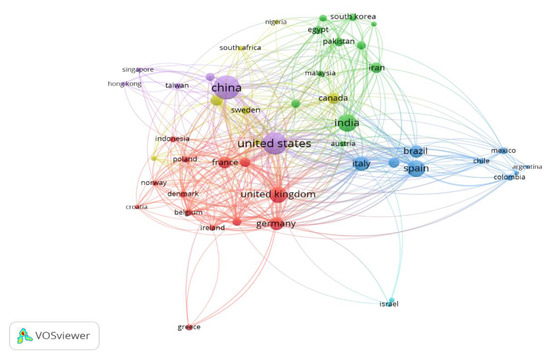You're using an outdated browser. Please upgrade to a modern browser for the best experience.
Please note this is a comparison between Version 1 by Esteban Inga and Version 2 by Alfred Zheng.
Education based on a positive approach can provide a platform to enhance these skills and opportunities to become proficient in team building, interaction, and interdisciplinary skills. Pedagogically sound audiovisual learning encourages a learner-centered, self-paced approach to learning at all levels. Information and communication technologies (ICTs) in research aim to modernize, enrich, and develop digital competencies, guaranteeing and strengthening students’ acquisition of these competencies. It seeks to encourage participation, collaboration, creativity, and reflection.
- advancing primary education
- information and communication technology
1. Introduction
The COVID-19 pandemic has posed complex challenges in all aspects of daily life, including education at all levels [1]. To adapt, many countries worldwide have turned to alternative methods of virtualizing teaching [2].
Gradually these technologies have been implemented to promote, foster, and build learning in an active and participatory manner.
The implementation of educational practices that incorporate information and communication technologies (ICTs) can bring students closer to a conscious and responsible interpretation of their environment, enabling them to become agents that use technology, science, engineering, and mathematics to generate change, visualize new knowledge, and build an environment that allows them to participate in institutional and social solutions at multiple levels [3].
The use of ICTs considers the pedagogical possibilities they offer to adapt to the classroom environment, the characteristics of the students, the purpose, and the education content. They allow teachers to become a guide for students for their learning as well as autonomous and collaborative work.
Education based on a positive approach can provide a platform to enhance these skills and opportunities to become proficient in team building, interaction, and interdisciplinary skills [4]. Pedagogically sound audiovisual learning encourages a learner-centered, self-paced approach to learning at all levels [5][6][5,6].
It is a model in which education is delivered exclusively in a digital environment, although there may be physical face-to-face contact between students and teachers [7][8][7,8]. As a result, the learning process has been systematically modified and improved to achieve better results, forming reflective, critical, and empowered students who excel academically and expand their knowledge [9].
Because of the importance of developing digital competence in students, of what they should know and be able to do to learn effectively, different organizations and experts in the area have established ICT models and standards classified into various categories to facilitate their use. For example, Canada’s International Society for Technology in Education (ISTE) has defined standards such as creativity and innovation, communication and collaboration, critical thinking, and digital citizenship. These are benchmarks in which students demonstrate knowledge of computer control and self-literacy skills on the network.
Public policy should address the population’s needs to ensure the provision of socially necessary and desirable goods or services. Therefore, it is worth reviewing the set of laws, regulations, decisions, and actions by the government to promote the right of Ecuadorian society to access knowledge as a fundamental citizen’s right [10][11][10,11].
Before the Fourth Industrial Revolution, evidence suggested that future careers would require individuals to have expertise in information management to predict and infer the results of the development of models and elements of artificial intelligence programmed to achieve the nation’s growth and its impact on the economy, responsible sustainability at the political and environmental level for the benefit of society [12].
Research is crucial in the educational institution to identify problems and provide practical and immediate resources to address situations in which students are immersed. It is essential to have more knowledge about using innovative tools in research and performance of academic tasks [13].
Technology development consolidates the online education model in the educational system. However, it is constantly changing and adapting to the evolution of technology and the political and social environment. It directly impacts the development of new paradigms and tools, leading to the need for exponential advancement in the planning and implementation of the learning process [3]. In response to these changes, the educational process is dynamic and adapts to technological changes [14][15][14,15].
Initiatives integrating technology into education and transitioning from administration to traditional distance education have influenced the emergence of educational phenomena such as Electronic University and Virtual University [16][17][16,17].
Methodological references in qualitative research in the humanities are considered comparatively simple and concrete because they promote the generation and activation of higher levels of thinking [18]. Applying these references can contribute to implementing active research methodologies, enabling students to develop their school activities better and integrate into their work groups.
Teaching methods and strategies supported by ICT are effective in acquiring new communication tools suitable for developing competencies in student-centered educational models [19]. Integrating new digital didactic resources is pertinent to improving the teaching–learning process [20][21][20,21].
Education has significantly changed by implementing various information and communication technology tools. Virtual scenarios have improved the interaction between teachers and students, significantly contributing to their training. Progressive pedagogical designs value student participation as essential, and guided and accompanied, they can search, analyze, and classify information [22][23][22,23]. To achieve this objective, teachers must meet predetermined requirements to become learning catalysts [24].
2. Advancing Primary Education through Active Teaching Methods and ICT for Increasing Knowledge

Figure 1.
Countries that stand out in the use of these methodologies. Source: Authors.
Table 1.
Summary of works related to Peer Instruction and Learning Engineering.
